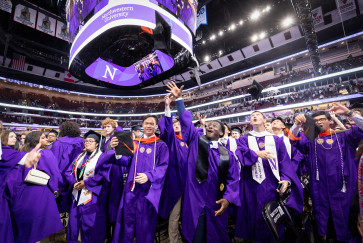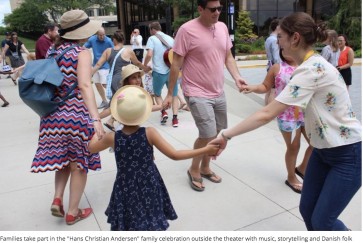WASHINGTON, D.C. - Northwestern University’s Medill School of Journalism, Media, Integrated Marketing Communications and the James W. Foley Legacy Foundation -- with partners Reporters Without Borders and A Culture of Safety Alliance -- have published an online curriculum guide for college journalism educators to teach students about the growing risk of reporting on conflicts, terrorism and violent unrest around the world.
The three-lesson curriculum guide, called “The James W. Foley Guide on Journalists’ Safety,” will be released Friday (Aug. 5) at the annual conference of the Association for Education in Journalism and Mass Communication in Minneapolis, Minnesota.
The release will be made at a special showing of “Jim: The James Foley Story,” the award-winning documentary detailing the capture, imprisonment and murder of U.S. journalist James Foley by the Islamic State. The first 100 educators to request access to the online document will be given a DVD of the film for classroom use.
The guide is intended to help educators teach students about the risks inherent in conflict reporting and how to think about, prepare and respond to those risks. These seminars are intended to challenge aspiring journalists to protect themselves in an increasingly dangerous world and to inform other future journalists, so they understand what their colleagues are experiencing.
The first lesson uses the “Jim: The James Foley Story” documentary to introduce students to the world of conflict coverage. The following two guides use research and case studies provided by seasoned journalists to let students think through the assessments they should take before embarking on potentially dangerous reporting. Role-play is used to reinforce the assessment rubric.
Ellen Shearer, the William F. Thomas Professor of Journalism, Medill News Service bureau chief and co-director of the Medill National Security Journalism Initiative, created and edited the curriculum guide in collaboration with Medill students Ryan Holmes, Satvika Khera, Jacob Meschke and Xuanyan Ouyang; Delphine Halgand of Reporters Without Borders; Emma Beals and David Rohde of A Culture of Safety Alliance; and Diane Foley of the James W. Foley Legacy Foundation.
“After his release from captivity in Libya, Jim made a point of talking to journalism students both at Medill and Marquette, his two alma maters, to make sure they understood the dangers of his work and its importance to democracy,” Shearer said. “This curriculum guide is an extension of his efforts.”
Diane Foley said her son, Jim, would be “deeply grateful for others to learn from his sacrifice.
“This safety education course continues his passion for press freedom with the vital tools of risk assessment and safety education for any aspiring young journalist or humanitarian interested in serving in dangerous situations,” she said.
“Defending and assisting journalists at risk, imprisoned or held hostage is our main daily activity,” Halgand said. “That’s why we were so enthusiastic to work on this unique curriculum guide since we discovered the powerful documentary. Any aspiring conflict journalist should study this curriculum.”
Beals, also a founding board member of Frontline Freelance Register, noted that, \"the new media landscape relies heavily on freelancers, making it an increasingly likely career path for young journalists. Frontline Freelance Register, through our involvement in ACOS, has been happy to help in the production of this valuable teaching resource by providing real-life case studies that we hope will assist young journalists navigate their way through the increasing risks in the field.\"
\"This extraordinary course will help young journalists navigate the growing dangers that reporters unfortunately face around the world. It will give them tools to help decide which type of story is worth taking a risk for - and which one is not,\" Rohde said.
The guide can be found at https://www.jamesfoleyfoundation.org/overview-of-curriculum/ and www.nationalsecurityzone.org; links are also available at www.acosalliance.org and https://rsf.org/.

